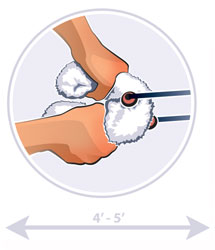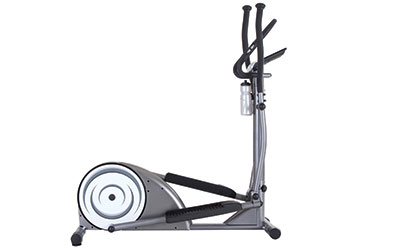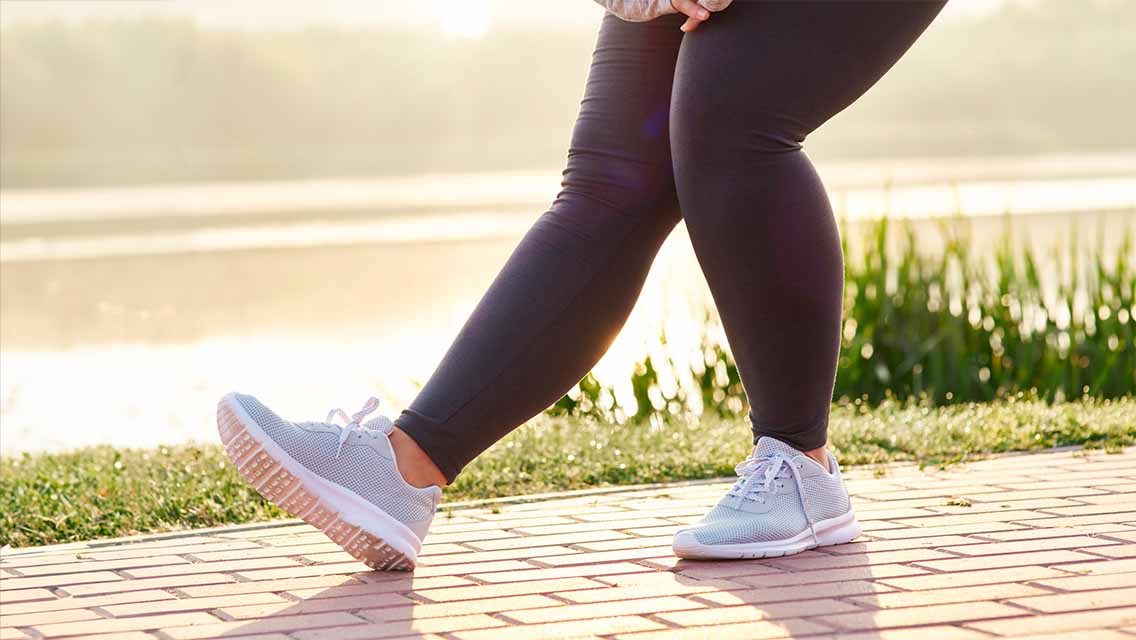How Do You Increase Max Pull-Ups?
Q1: I’ve conquered my first pull-up! In fact, I can eke out three now (or pretty close), but I’m stuck again. My goal is 10. How can I get there?
A: Simply follow the advice of freaky-strong Russian kettlebell guru Pavel Tsatsouline, who recommends doing them as often as possible while staying as fresh as possible. “You’ll be up to an effortless 10 before the month is over,” says Tsatsouline, author of The Naked Warrior.
This may sound outlandishly fast, but this protocol boosted my max number of pull-ups sixfold in less than a month. It takes commitment, though.
You’ll do sets of pull-ups with just half your number of max reps, and round down if the math doesn’t cooperate — e.g., when your max is three, do sets of one; when you’re at four or five, do sets of two. (Still working on that first pull-up? Check out these tips.)
Consider purchasing a pull-up bar for home and work — I’m a huge fan of the portable Door Gym (www.doorgym.net) — and do a set once an hour till you fatigue, five days a week.
If this setup isn’t an option, you can still get great results at your health club, provided you go there at least three times a week. There, start your workout with a set of half-max pull-ups. Rest until your heart rate returns to normal, then do another exercise that doesn’t tucker out your lats or biceps: squats, bench press or kettlebell swings, for example. Rest again, then do another set of pull-ups. And so on. Stop doing pull-ups at the first signs of fatigue. Try to bag five to 10 sets with at least five minutes of rest between them.
At the end of each week, again test your max pull-ups to establish next week’s set numbers (eventually, perform this every two weeks). “It’s hard to believe that training so frequently and without ‘intensity’ can be so effective,” says Tsatsouline. “But soon you will not want to train any other way!”
Fitness Fixes: How to Improve Grip Strength
Stronger hands increase tension throughout the body, thus allowing you to lift more weight.
Regardless of how you move a weight, you can improve your performance by strengthening your hands. That’s because hands are hardwired into the nervous system: By tightening them around a bar or dumbbell, you increase tension throughout the entire body and stabilize the joints, core and spine. “This leads to an increased number of muscle fibers firing and more coordinated movements,” says Jedd Johnson, CSCS, RKC, a world-record-holding competitor in grip sport and cofounder of the strength-training site www.dieselcrew.com. “Unfortunately, our lives involve so much automation and such a lack of strenuous activity that many of us come up short in hand and forearm strength.”
That weakness can alter the way you do certain exercises and reinforce poor movement patterns, says Troy Anderson, strongman competitor and owner of Anderson Training Systems in Tempe, Ariz. To build your grip, you need to work the flexor muscles, which close the hands and bend the wrist forward; the extensor muscles, which open the fingers and extend the wrist backward; and the thumbs, which help you hang on for those last few reps.
Towel Row

- Set a cable machine pulley at chest level. Loop a towel through the handle and step back 4 to 5 feet to create tension. Bend your knees slightly and extend your arms toward the machine.
- Maintaining a natural arch in your back, pull the ends of the towel toward the bottom of your ribcage. Keep your elbows close to your body and squeeze your shoulder blades together as you pull.
- Extend your arms fully to return to the start position. Do two to four sets of 10 to 15 reps one or two times a week.

Towel Row Grip Upgrade:
Fold the ends of the towel back toward the cable unit handle to double the diameter of your “handles.”
Suitcase Dead Lift Hold
- Set up a barbell or kettlebell on one side of your body, the middle of the handle by your foot. Push your hips backward and squat down until you can grasp the implement with one hand.
- Maintaining the natural arch in your back, use your legs to lift the weight from the floor. Don’t twist your torso or tilt your hips during the movement.
- Once you’re upright, perform a timed hold for 10 to 30 seconds. Return the weight to the floor without breaking form.
- Do two to four sets of four to eight reps one to two times a week.
Dead Lift Grip Upgrade: If you have space, walk 10 to 15 yards while you’re holding the weight. The movement will add a valuable grip challenge.
Your Grip Might Be Weak If. . .
- You can’t keep your wrists locked and straight when doing simple movements.
- If you have to use lifting straps for more than your very heaviest sets.
- You can’t hang from a pull-up bar for 45 to 60 seconds (ideally closer to 60).
More Grip Tips
- Loop two hand towels over a pull-up bar and perform the pull-ups by grasping the ends of each towel. (Most barbell or dumbbell lifts can be modified this way.)
- Stand a dumbbell up on one head and lift it off the ground by the other head with one hand; this is called a pinch grip. Make sure the hands are warmed up, though, and don’t go too wide or you could put stress on the fingertips or thumbs.
How Do You Increase Your Running Pace?
Q3: I’ve been running a mile a couple of times a week for the past month. Each time, I try to beat my previous effort. My time isn’t improving, though — how can I speed up?
A: It sounds counterintuitive, but try running slower and for a longer distance — at least at first. “One of the best ways to build speed is to increase the physiological infrastructure capable of supporting a higher intensity of exercise,” says Janet Hamilton, MA, CSCS, founder of Running Strong, a coaching service in Atlanta. “That’s best accomplished by running at an aerobic pace substantially slower than your best effort — in other words, not by trying to go out and improve your time day after day after day.”
Your body recognizes the “overload” of the longer distance and strives to adapt by making your heart bigger and stronger, multiplying and expanding blood vessels and mitochondria, increasing blood volume, and strengthening your muscles and connective tissues (your ligaments and tendons). This takes time, says Hamilton, so you won’t necessarily see changes from one run to the next, but over a few weeks your stamina will improve, and so will your speed. By training your body to sustain efforts in excess of a mile, you’ll find that you become faster than you were when you were doing a mile at a time. (Note: Don’t increase your distance by more than 10 percent each week.)
This doesn’t mean you should limit yourself to lengthy runs, though. Hamilton recommends alternating longer days with shorter ones so you’re not always going the same distance. Also include strength-training sessions, sprint workouts and form drills to improve running mechanics and the force production behind each stride. All of this will lead to more speed.




This Post Has 0 Comments